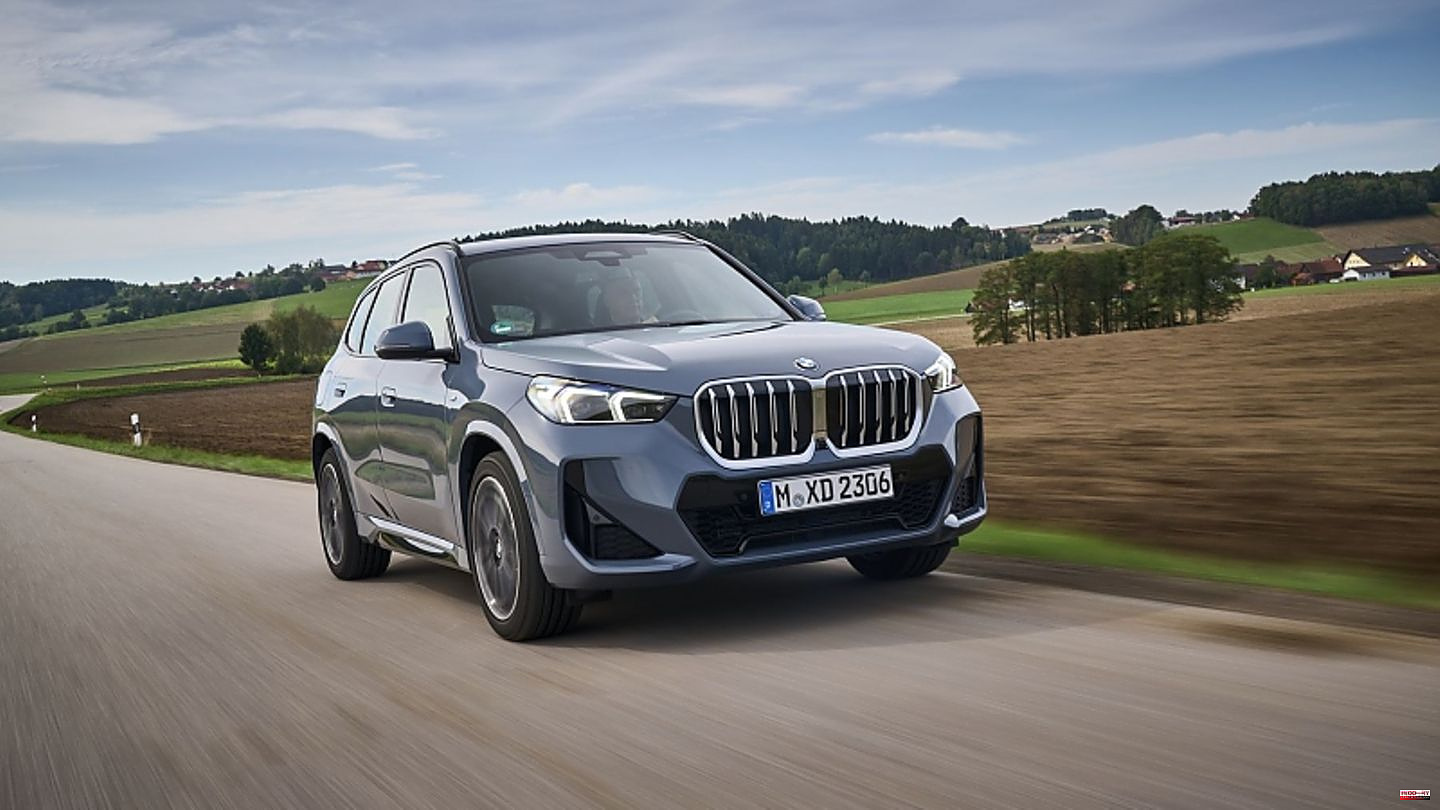That's the thing with relatives. You're not always proud of them, but in the end blood is thicker than water and you're happy that they exist. That's roughly how it is with the BMW Active Tourer and the BMW X1. The crossover is much cooler than the compact van, which has been denounced as a mobile home for pensioners. At second glance, the two automotive cousins have something in common and each has its right to exist, be it as a van space interpreter or as a rustic lifestyle stroller. Especially since both are based on the BMW front-wheel drive architecture FAAR and are also quite close to each other in terms of the internal series code: U6 for the Active Tourer and U11 for the X1.
This technical relationship not only has positive effects. The rotary push button is missing in both of the interiors. No matter how euphorically the designers praise the lightness of the center console and the airy feeling of space, we are a fan of the round input assistance. Since its handling quickly becomes second nature and thus significantly reduces driver distraction. BMW insists that voice control serves the same purpose. This usually works very well, but not always, and commands that the system does not understand right away can usually be implemented quickly and easily with the rotary pushbutton.
The relationship between the two vehicles also has good points. With the X1, for example, you can also fix the smartphone upright to the inductive charging cradle using the bracket. In addition, the curved cockpit is also finding its way into the X1 (in BMW marketing language: “curved display”). So: Two curved monitors. The one for the virtual instruments is 10.25 inches, while the infotainment touchscreen is 10.7 inches. Of course, BMW aficionados will immediately notice that the screens are smaller than in the large X models. But that does not detract from the usability and readability. However, BMW is a little confused with the menu navigation. At least there is a true head-up display on the X1, unlike the Active Tourer, where the displays are still projected onto a flip-up plastic screen.
The BMW X1 23i scores points when it comes to economy of space: the dimensions of the third generation of the BMW X1 have increased significantly compared to its predecessor. The compact crossover is now 4.50 meters long (plus 5.3 centimeters), has a wheelbase of 2.69 meters (plus 2.2 centimeters) and has grown in height by 4.4 centimeters to 1.64 meters. The burly appearance, which puts the SUV in the first place in terms of length up to six centimetres. X3 generation is approaching, also affects the interior. So there is also plenty of room for tall passengers in the rear. In addition, the rear seat can also be moved by 13 centimeters in length. The trunk does not mutate into a loading niche and has a volume of a decent 500 liters in the standard configuration, if you fold down the backrests of the rear seat, the capacity increases to 1,545 liters.
The components of the mild hybrid powertrain in the BMW X1 xDrive23i are familiar from other models from the Munich carmaker. At the heart of the propulsion is a turbocharged two-liter four-cylinder petrol engine with 150 hp / 204 and a maximum torque of 320 Newton meters, which is supported by a 14 kW / 19 hp electric motor integrated into the seven-speed dual-clutch transmission. This results in a system output of 160 kW / 218 hp and a maximum torque of 360 Newton meters.
Powerful enough to propel the 1,655-kilogram crossover from a standing start to 100 km/h in 7.1 seconds and accelerate it to a speed of 233 km/h. But the decisive factor is the interaction between 48-volt mild hybridization, combustion engine and all-wheel drive. A BMW should still be a pleasure to drive. The horsepower and the 55 Nm of torque, which the electric motor contributes to propulsion, have a positive effect on intermediate sprints from the low speed range. But the e-power is also noticeable and helpful when starting or accelerating after sailing.
As soon as you activate the X1 with the sport driving mode, all drive units are subordinate to the propulsion. Then you're on the road with the compact SUV, even if the combustion engine sometimes growls and complains about the extra work. The all-wheel drive is designed according to the hang-on principle. So basically the front axle has the say, to save fuel, as soon as traction is needed, the rear axle gets involved. The BMW X1 xDrive23i speeds through corners without presenting the driver with any major challenges. Especially since the approach to the limit range is announced by a slight push over the front wheels. The chassis, which is rather firm but not uncomfortable, does its part and does well even on longer stages.
When it comes to driving assistance systems, the predecessor X1 didn't exactly cover itself with glory. That is now changing – and massively so. In the compact SUV, a front collision warning now also pays attention to oncoming traffic when turning left, and the lane departure warning system supports the driver on particularly narrow streets or lanes. When getting out, the technology also keeps an eye on approaching cyclists and warns the passengers of the X1. So much technology has its price and BMW lets the BMW X1 xDrive23i reward it with at least 49,450 euros.








